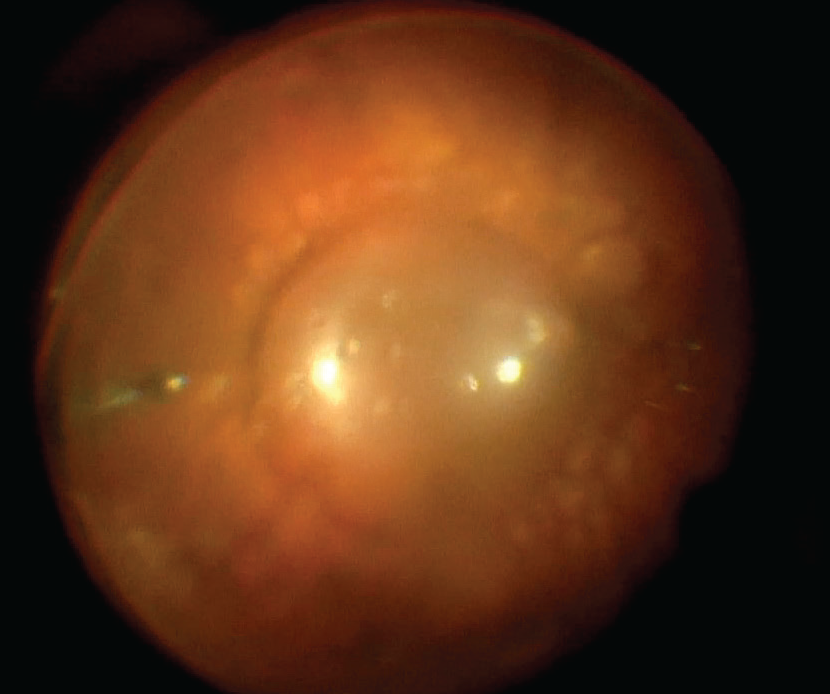 |
Bios Dr. Gong is an instructor of ophthalmology at Mass Eye and Ear and Harvard Medical School. Dr. Patel is also an instructor of ophthalmology at Mass Eye and Ear and Harvard Medical School, as well as director of pediatric retina at Boston Children’s Hospital. Dr. Hahn is a partner at New Jersey Retina in Teaneck. DISCLOSURES: Drs. Hoyek, Gong and Patel have no relevant relationships to disclose.
Dr. Hahn is a consultant to DORC. |
 |
|
Dense and viscous silicone oil and perfluoro-n-octane mixture on the posterior retina surface. |
Perfluoro-n-octane is an important intraoperative aid in repairing complex retinal detachments, particularly in cases with giant retinal tears and proliferative vitreoretinopathy.1
While perfluoro-n-octane (PFO) is typically removed entirely during fluid air exchange (FAX), there may be inadvertent liquid retention. This substance can dissolve in a silicone oil (SO) tamponade, forming a transparent, high viscosity material, referred to as “sticky silicone oil.”2
Because PFO is toxic to photoreceptors and causes visual field disturbances, prompt removal is often necessary. However, due to the density and viscosity of the substance, a unique collection forms posteriorly, which can’t be aspirated by conventional methods (Video).
Surgical technique
We use a three-port pars plana approach. We remove the silicone oil that isn’t mixed with PFO via viscous fluid extraction through the vitrectomy port in standard fashion. Then we perform a superotemporal localized conjunctival peritomy and use a 20-gauge microvitreoretinal blade to make a sclerotomy 3.5 to 4 mm posterior to the limbus, which is slightly enlarged to accommodate an 18-gauge instrument.
The next step is to connect an 18-gauge angiocatheter directly to the viscous fluid control extractor. The catheter, inserted into the newly created sclerotomy, can be advanced posteriorly until the tip is immersed in the remaining PFO/SO mixture. Active foot pedal-controlled aspiration is then initiated with simultaneous infusion of balanced salt solution to remove the target material.
Surgical pearls
Here are three pearls for using the angiocatheter to remove retained PFO/SO:
- The 18-gauge catheter can often be found in the operating room’s anesthesia cart.
- Due to its size, the 18-gauge catheter may aspirate more fluid than is being infused and lead to a transient decrease in eye pressure. Therefore, keep a low and constant suction and ensure that the catheter tip is in the viscous mixture rather than in BSS.
- If there’s difficulty inserting the angiocatheter, the tip may be beveled 45 degrees to facilitate entry. RS
REFERENCES
1. Coll GE, Chang S, Sun J, Wieland MR, Berrocal MH. Perfluorocarbon liquid in the management of retinal detach-ment with proliferative vitreoretinopathy. Ophthalmology. 1995;102:630-638; discussion 638-639.
2. Ghoraba HH, Zaky AG, Abd Al Fatah HM, El Gemai EEDM, Heikal MA. Sticky silicone oil. Retina. 2017;37:1599-1606.
3. Lin HS, Tang YP, Zhang L, et al. New technique for removal of perfluorocarbon liquid related sticky silicone oil and literature review. Int J Ophthalmol. 2021;14:1903-1908.




